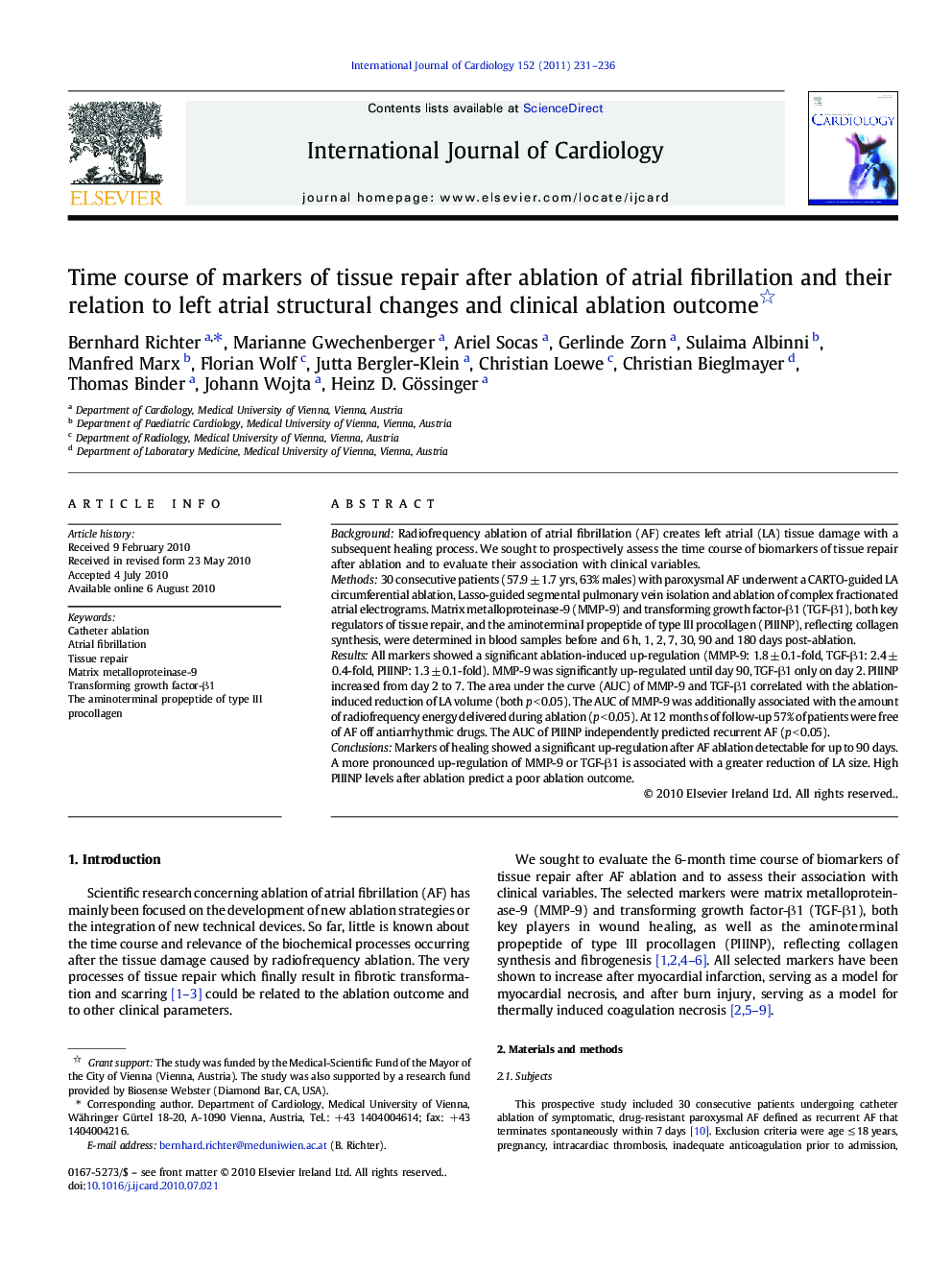| Article ID | Journal | Published Year | Pages | File Type |
|---|---|---|---|---|
| 5977718 | International Journal of Cardiology | 2011 | 6 Pages |
BackgroundRadiofrequency ablation of atrial fibrillation (AF) creates left atrial (LA) tissue damage with a subsequent healing process. We sought to prospectively assess the time course of biomarkers of tissue repair after ablation and to evaluate their association with clinical variables.Methods30 consecutive patients (57.9 ± 1.7 yrs, 63% males) with paroxysmal AF underwent a CARTO-guided LA circumferential ablation, Lasso-guided segmental pulmonary vein isolation and ablation of complex fractionated atrial electrograms. Matrix metalloproteinase-9 (MMP-9) and transforming growth factor-β1 (TGF-β1), both key regulators of tissue repair, and the aminoterminal propeptide of type III procollagen (PIIINP), reflecting collagen synthesis, were determined in blood samples before and 6 h, 1, 2, 7, 30, 90 and 180 days post-ablation.ResultsAll markers showed a significant ablation-induced up-regulation (MMP-9: 1.8 ± 0.1-fold, TGF-β1: 2.4 ± 0.4-fold, PIIINP: 1.3 ± 0.1-fold). MMP-9 was significantly up-regulated until day 90, TGF-β1 only on day 2. PIIINP increased from day 2 to 7. The area under the curve (AUC) of MMP-9 and TGF-β1 correlated with the ablation-induced reduction of LA volume (both p < 0.05). The AUC of MMP-9 was additionally associated with the amount of radiofrequency energy delivered during ablation (p < 0.05). At 12 months of follow-up 57% of patients were free of AF off antiarrhythmic drugs. The AUC of PIIINP independently predicted recurrent AF (p < 0.05).ConclusionsMarkers of healing showed a significant up-regulation after AF ablation detectable for up to 90 days. A more pronounced up-regulation of MMP-9 or TGF-β1 is associated with a greater reduction of LA size. High PIIINP levels after ablation predict a poor ablation outcome.
